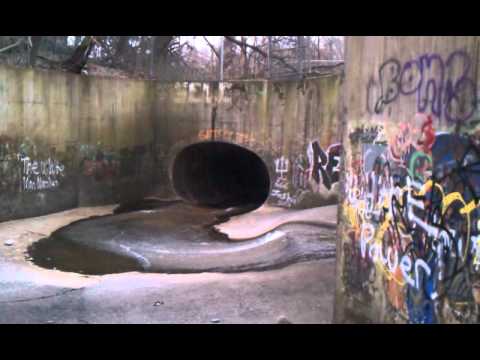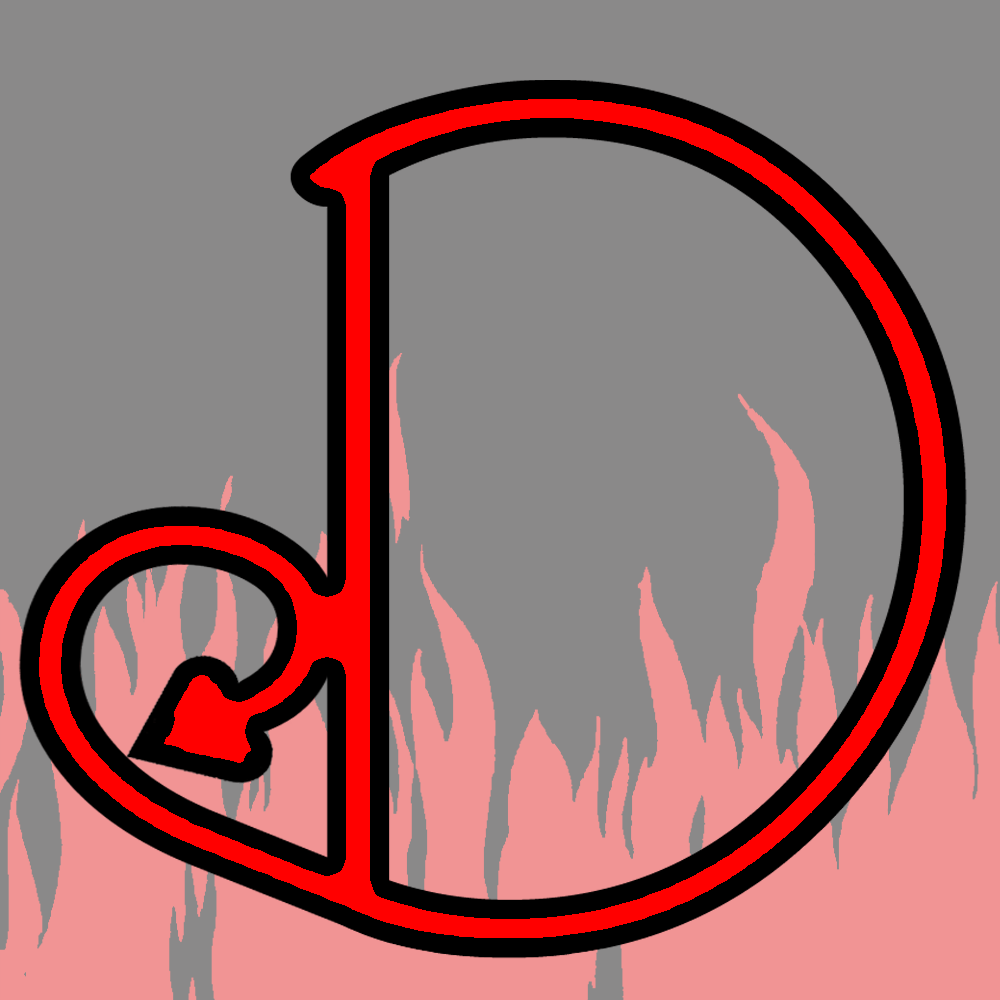
Once again, Jacob proves that he knows nothing about booze. Victoria suggests that a Seven and Seven (with thanks to The Spruce Eats) would be a solid coping mechanism for this episode. The fruity “Gates of Hell” cocktail would be another option. We believe that if you, the audience, were at least a little buzzed, it would be overall better for our ratings.
You might also enjoy a zuchinni milkshake? Jamin brings something fictional to the table, but it turns out to be real…
Since “Scott Pilgrim Vs. the World” is now an 11-year-old reference (!), let’s include a link to the memorable and memeworthy “Vegans are just better” scene. The DispatchIst: your home for cutting-edge cultural references.

You can find lots of coverage of the “Sit on Santa’s Lap” on the web, but there’s a sameness to the coverage, that “copied from the press release” look and feel. I wonder if it actually happened, or if people are being irked preemptively? The Antlion Entertainment Art Collective also brought you the Jeffrey Epstein statue and several other projects. I particularly liked their exquisite corpse music under the band name, “The Quarantines.”

Have you found Satan? Not surprisingly, he’s on the internet. At right, gaze upon the Baby Baphomet tee from The Satanic Temple’s delightful web shop. To quote Terry Pratchett and/or Neil Gaimen, he’s got the cutest little hoofie-woofies!!

The Gates of Guinee
So, according to local tradition (and apparently a local tradition of playing “find-the-hellmouth” every year), there are seven gates to Guinee, the Voodoo spirit world, that can be found scattered around the French Quarter of New Orleans. The exact locations of these gates isn’t generally known, although “Marie Laveau’s Tomb” seems to be established by consensus as gate #1. #2 might be either one of the other area cemeteries, or Perseverance Hall, a famous Masonic Temple turned Dance Hall dating from the 1820s.

Baron Semedi’s veve, at right, which (according to some) can be mapped loosely over the French Quarter to find the seven gates of Guinee. There are seven stars…or maybe nine… and if gates 1 and 2 are Marie Leveau’s tomb and Perseverance Hall, that’s only five or six blocks apart, so it may not need to be a very big map. But the stars aren’t numbered, which is inconvenient. If it was simple it wouldn’t be occult.

There is no direct connection between Baron Lacroix and Lacroix sparling water. We invite you to make one yourself. It’s fun!
Victoria wondered what happens if you get the gates out of order or otherwise mess up this particular spirit quest. Googling for the incredibly unhelpful rhyme “Seven nights, Seven moons, Seven gates, Seven tombs,” I found this surprisingly information-dense advertisement for seven gates essential oil, which suggests that the consequences might be as bad as “bad spirits enter the land of the living to drag souls away.” But sitting in our studies in Austin, there doesn’t seem to be any real information on this rhyme or the locations of the gates, nothing authoritative at any rate.
As established, Jacob 1) does not drink and 2) writes most of the show notes. So 3) he had to look up what a New Orleans hand grenade is. Apparently it’s a sweet fruity cocktail (vodka, rum, gin, melon liquor) in a very silly tall green glass. I suspect everyone but Jacob already knew this.
The question of “is Hinduism polytheistic” goes fun places. “Monism” is the idea of reducing a multiplicity of things to a single one-ness. It’s different from monotheism because it implies a “many” that is of a single source, or of a single existence…like a dualism that’s really two sides of the same coin. So here’s a Big List of Loa, which is really interesting, but how many of these are actually separate entities, and how many are aspects of each other? Other resources seem to suggest that the loa sometimes have aspects of each other. A lot of these entities have multiple names, and that can lead to what no folklorist in their right mind would call “pantheon creep,” so I’ll use that here.
Word-drop, “Terrior,” the complete natural environment in which a particular wine is produced, including factors such as the soil, topography, and climate. Rarely applied to paranormal investigation.
Hell.com
For a really deep dive on the history of “Hell.com,” including more archive.org excavation, creepypasta, and information on the hack-and-export of the site, the podcast “Thinking Sideways” had an extraordinarily thorough episode called “what the heck was hell.com?” which should really be the difinative audio resource on this subject. Follow that up with a 1999 wired.com review of a hell.com event (a nicely positive article), and a two-part interview with hell.com’s creator, Ken Aronson. And take a little youtube journey through the site, at least one version of the site.

IIt seems like the hosts generally aren’t fans of conceptual art…The “hell.com” story is at heart a password-locked website that acted like a portfolio and showcase for web-based net.art, in a time before search engines, when the world wide web was frankly a lot more magical. It’s still magical, but we know about how the magic works now. As a modern myth, it hasn’t aged well, it doesn’t seem like this sort of thing would create a stir these days.
Hell Gate under Clifton, NJ
There is unfortunately a certain sameness to “hellmouth” local legendry…it’s for kids, by kids, to scare kids, and there’s not a lot of “there” there. But so far as awful damned scary places go, the hell tunnels of Clifton…you could easily imagine turning the corner and seeing, if not Satan, at least a freakish cultist in black robes with spikes instead of eyes, or something like that. Check “Exploring with Cody’s” and “Mobile Instinct’s” youtube vids, this is not a place that anyone wants to get lost in.
Weird New Jersey’s probably written up the definitive article on this one, with details on Red Eyed Mike. And of course Atlas Obscura has some more details on how, where, and what to expect (glowing skulls, natch.)

Devil’s Den, Florida
The Devil’s Den is a karst, a cave with a partially collapsed roof over an underground river near Williiston, Florida. It is absolutely beautiful, a deep blue pool lit by a shaft of light filtered through hanging vines. Wow. The “hell” content is pretty minimal…because of its constant 72 degree temperature, steam rising from the crater looked like smoke, and earned it a devilish nickname. The land around it is used to cultivate watermelons, and it doesn’t get any less hellish than “watermelon farm.” Devi’s Den is pretty interesting for other reasons…one of the chambers in its river/cave complex had the remains of a colony of 7500-year-old bog lemmings. And some humans and sabertooth tigers and spectacled bears and other stuff, but the bog lemmings are obviously the stars of the show, here.


Myths over Miami
This is a fantastic story: a coherent and epic good-vs-evil narrative shared by a community of runaway children in Florida, placing them as messengers and semi-psychopomps in a battle for souls between Bloody Mary and the kind Blue Lady. Angels guarded by giant alligators. Satan patrolling the shores. A strong anti-drug/anti-gang message. That was the 1997 article written for the Miami New Times by Lynda Edwards. If you ever wanted a setting for that gritty urban youth-fantasy RPG, this would be the one, and it’s not really a surprise that the story was cribbed by Mercedes Lackey in “Mad Maudlin” and licensed by Disney/Clive Barker.
Unfortunately, there’s never been any follow-up, at least none that I can find…no masters thesis, no “15 years later” interviews with the kids…and when something of this complexity only as a single article, it does raise the question of authenticity. Was this invented wholecloth? Or at the very least, was the reach and epicocity (the state of being epic, thank you) exaggerated by the author? No real way to know now.
The story was adapted into a short film, “The Epic of Hershey,” which may be worth tracking down, but it doesn’t seem to have had a very wide release.
On the Bloody Mary myth and party game…this one goes back to at least the 1970s, with antecedents in the Victorian era. It wasn’t always “Bloody Mary,” but sometimes “Mary Worth” or a half-dozen other names. The good people at Folklore Thursday have a detailed look at the game’s folkloric history, possibly as a divination.. Laura Winter’s thesis, “Bloody Mary in the Mirror: A Comparative Examination of a Living Tradition” looks at the Bloody Mary apparition as “antithetical play,” a subversive initiation that’s part of the secret world of youth, along with a great many variations on the theme. Her perspective is influenced by her Catholic youth experience, which makes the thesis all the richer, I enjoyed skimming over this one.
Jacob mentions the “Strange Face in the Mirror Illusion,” wherein a person’s reflection in a large mirror in a dark room seems to change (appearing to rotate, shift into an entirely new face, even change into other species or monstrous creatures) over a ten-minute session. Victoria mentions the Troxler Effect or Troxler Fading, where objects and sensations fade away when the brain tags them as unimportant. Most relevantly to the Bloody Mary phenomenon, this happens easily in our peripheral vision.
Podcast: Play in new window | Download

